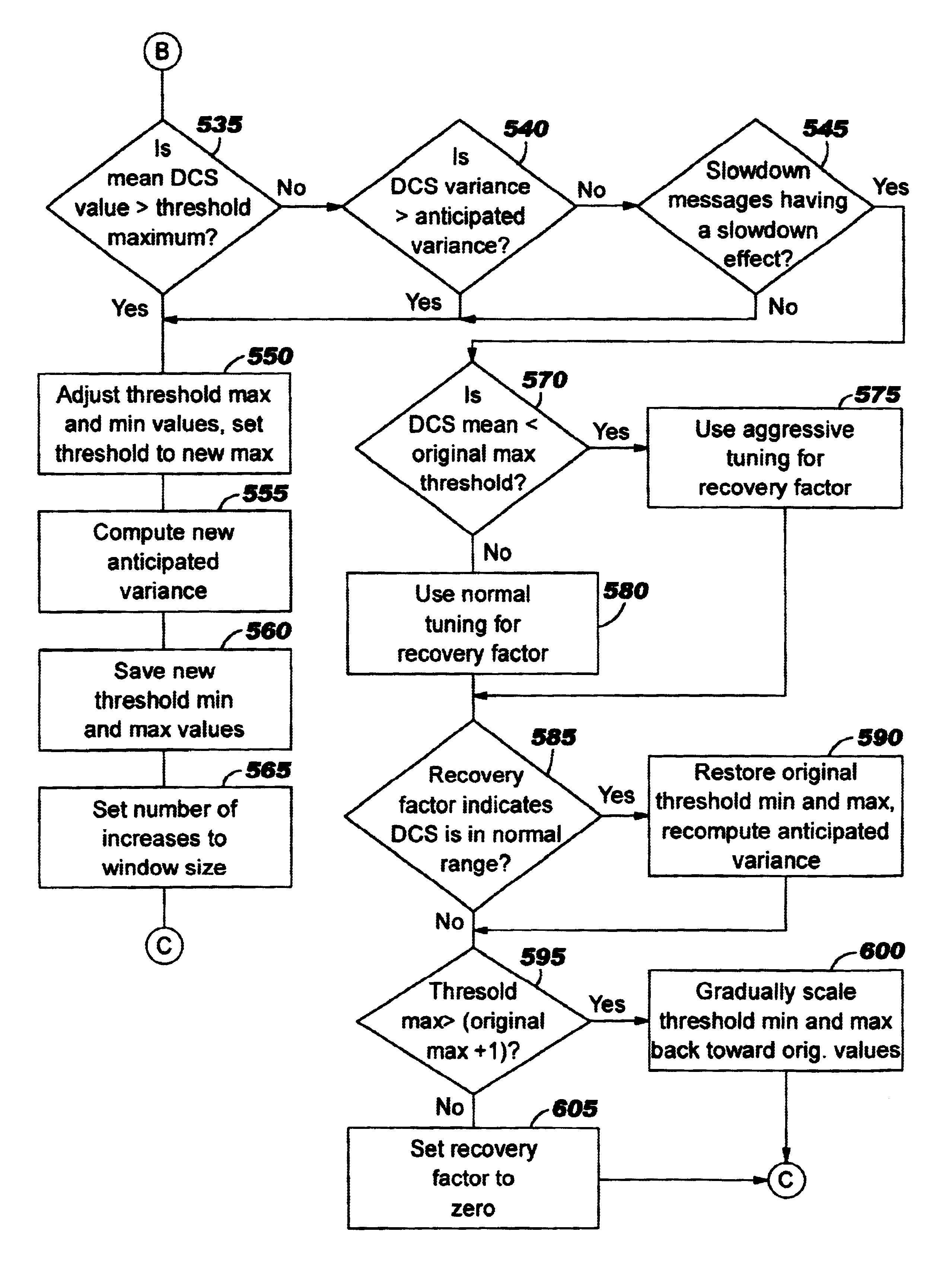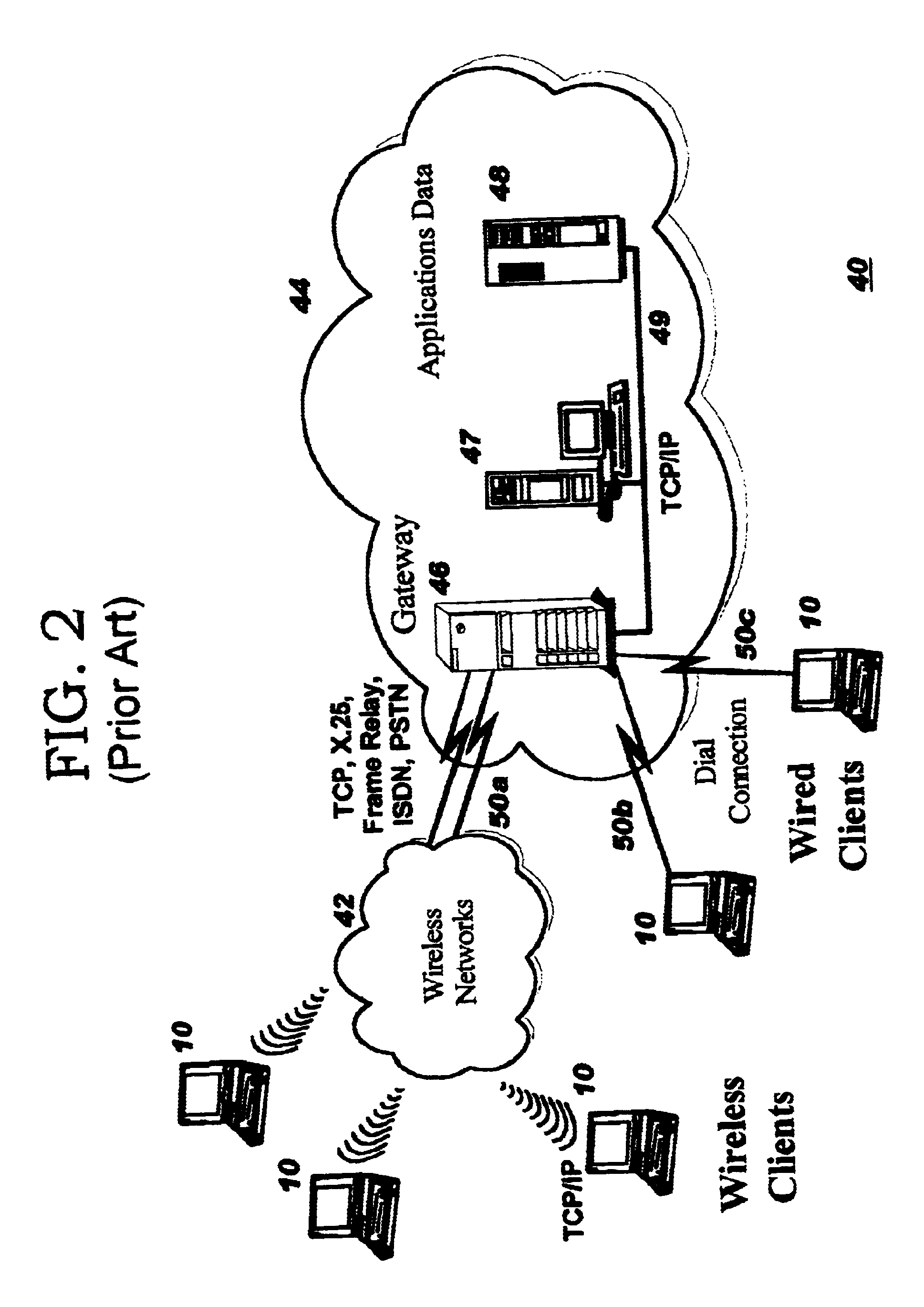Adapting receiver thresholds to improve rate-based flow control
a receiver threshold and rate-based flow control technology, applied in the field of computer programming, can solve problems such as delays and inefficiencies, data packet loss or the need to send again, and network resources such as network bandwidth are not being used efficiently
- Summary
- Abstract
- Description
- Claims
- Application Information
AI Technical Summary
Problems solved by technology
Method used
Image
Examples
Embodiment Construction
The process of the first preferred embodiment begins at Block 500 of FIG. 5A. FIG. 5A represents the logic used in computing a number of values that are used subsequently (by Blocks 535, 540, and 545 of FIG. 5B) to detect a foreign protocol. (As discussed above, a foreign protocol is one not using the techniques of the present invention.) At Block 500, a time averaging coefficient, "Avg_Coef" is computed. This value will be used to detect a foreign protocol, and is also used if a foreign protocol is detected, and is inapplicable otherwise. Avg_Coef is set to the smaller of a DCS averaging limit or the result of dividing the measurement interval by the DCS averaging interval, according to the following equation: ##EQU1##
The variable "Measurement_Interval" corresponds to the time since the most recent rate request message was received, computed as the receiver's delay (T4-T2). In the preferred embodiment, the averaging limit is a constant value of 0.2 seconds, and the averaging interv...
PUM
 Login to View More
Login to View More Abstract
Description
Claims
Application Information
 Login to View More
Login to View More - R&D
- Intellectual Property
- Life Sciences
- Materials
- Tech Scout
- Unparalleled Data Quality
- Higher Quality Content
- 60% Fewer Hallucinations
Browse by: Latest US Patents, China's latest patents, Technical Efficacy Thesaurus, Application Domain, Technology Topic, Popular Technical Reports.
© 2025 PatSnap. All rights reserved.Legal|Privacy policy|Modern Slavery Act Transparency Statement|Sitemap|About US| Contact US: help@patsnap.com



